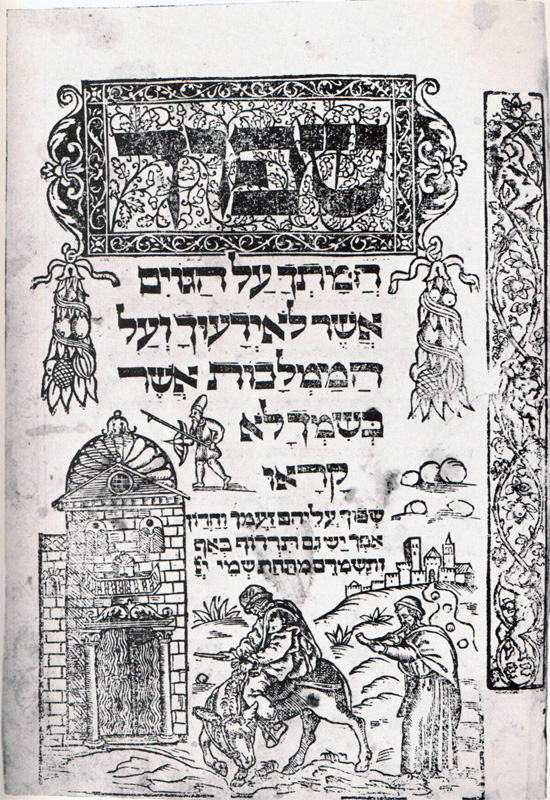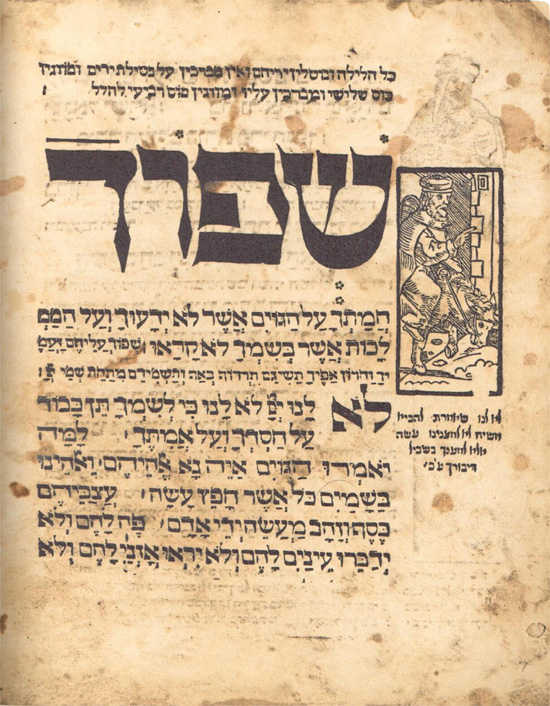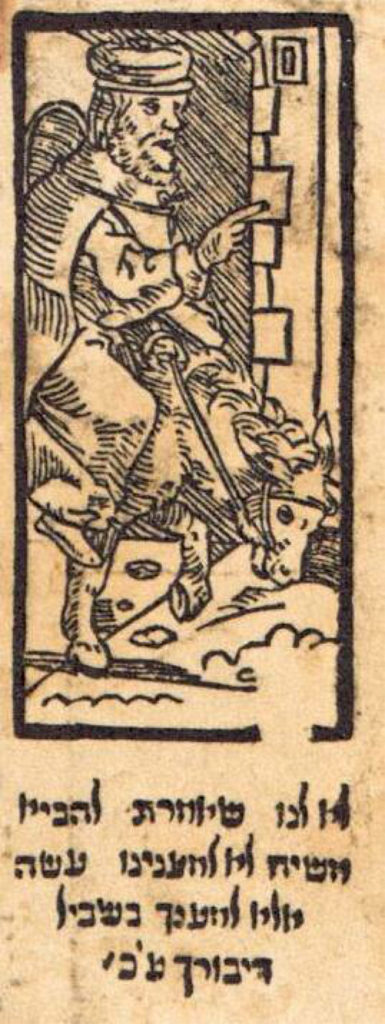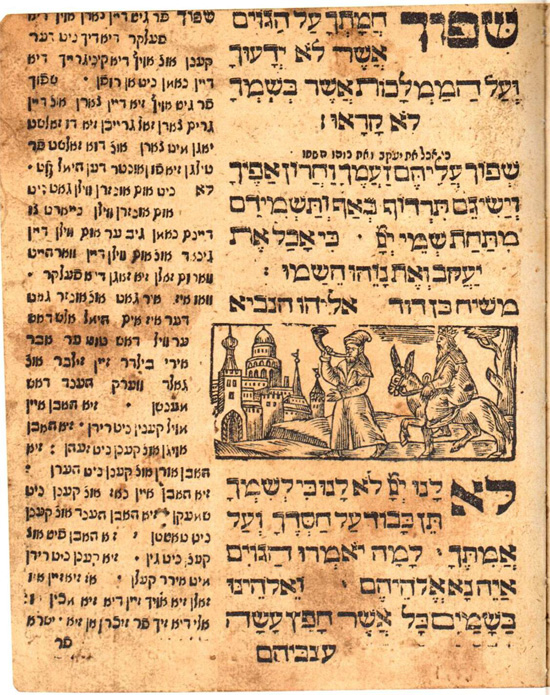Towards a Bibliography of seforim related to Shavuos and Megilas Rus (both new and old) – updated
Towards a Bibliography of seforim related to Shavuos and Megilas Rus (both new and old)
By Eliezer Brodt
Originally posted May 24, 2012 – Updated June 3, 2019
In this post I intend to start a list towards a more complete bibliography to the various seforim (new and old) and articles related to Shavuos (including many links). I hope to update it in the future.
When learning the Halachos of Shavuos, one is struck how the Tur does not mention anything special for Shavuos except for instructions related to davening and Keriyas Hatorah. The only custom he mentions that is unique to Shavuos is saying Azharot. Rabbi Yosef Caro in both of his works, Beis Yosef and Shulchan Aruch pretty much follows in this path. In the Codes is not until the Rema that some of the famous customs related to this Yom Tov are brought down, such as the custom of placing flowers in shuls and houses, the custom of eating Milchigs and eating special lechem to remember the Shtei Halechem. Only afterwards through the writings of the Matteh Moshe, Knesses Hagedolah and especially the Magen Avraham are the other customs related to this Yom Tov brought forward, among them, when exactly is one supposed to daven Maariv Shavuos night, staying up the whole night learning, saying Akdamus, using a special Trope when leining the Aseres Hadibros, and leining Megilas Rus[1].
The first work worth mentioning, as its one of my all-time favorites, is Rav Zevin’s Moadim Be-halacha. In this work he has four pieces, none of which needs my approval! – related to Shavuos. He has a general piece, one related to various issues about the Shtei Halechem, another related to Megilas Rus and one related to various aspects of Aseres Hadibros.
Regarding general aspects of Aseres Hadibros one should see the collection of articles in the volume called Aseres Hadibros edited by B. Segal (Magnes Press, 1986) and the work Aseres Hadibros Ve-keriyas Shema from Moshe Weinfeld (2001).
For a discussion of the special Trope used when leining the Aseres Hadibros see the article from Amnon Shiloah in the volume Aseres Hadibros edited by B. Segal. See also Rabbi Dovid Yitzchaki in the back of his edition of Luach Eresh pp. 524- 540; the series of articles of Y. Laufer (available here, here and here) [special thanks to my good friend Mr. Yisroel Israel for bringing this to my attention]; this article from Y. Ofer. See also Jordon, Penkower, ‘Maimonides and the Alepp Codex‘, Textus IX (1981), pp. 115-117.
For discussion of the custom to stand during the leining of Aseres Hadibros see this earlier post by Dan Rabinowitz available here and especially the sources listed at the end. To add to the usage of the Teshuvos Harambam mentioned there, see Rav Zevin, Moadim Be-halacha, p. 389-390. See also what I mention here, and also Rabbi Oberlander, Minhag Avosenu Beyadenu, pp.605-622. In addition see here [thanks for Yissachar Hoffman for sending me this source]. In the work Shiurei Rav Elyashiv on Berachos (p. 93) it says that he held it’s assur to stand based on this teshuvah of the Rambam. I will add that I davened for many years at Rav Elyashiv’s minyan on shabbos. I always wanted to see if he would sit or stand but he almost always got that aliya – until one time he did not and I was able to see that he indeed stayed seated!
Regarding the dating of Matan Torah see A. Lifshitz, The Date of the Giving of the Torah In Rabbinic Sources, Netuim 16 (2010), pp. 33-68.
Regarding Shtei Halechem see the excellent work Birchat Haaretz from Rabbi Y. Mashbaum available here.
Regarding the time when to daven Maariv Shavuos night and making Kiddish see Rabbi Binyomin Hamburger, Shorshei Minhag Ashkenaz, 4:344-369. See also Eliezer Brodt, Halachic Commentaries to the Shulchan Aruch on Orach Chayim from Ashkenaz and Poland in the Seventeenth Century, PhD, Bar Ian University) July 2015, pp. 338-341.
Regarding staying up Shavuos night, see R. Hamburger, Shorshei Minhag Ashkenaz, 3:268-364, where he traces this minhag and deals with, at great length, the minhag of saying Tikun. See also Professor Moshe Chalamish, Ha-Kabalah, pp. 595- 612. See also J.D. Wilhelm, “Sidrei Tikkunim,” in Alei Ayin: Essays Presented to Salman Schocken (Jerusalem: Schocken 1948-1952), pp. 125-146, (Hebrew). Of course, I must mention my good friend Menachem Butler’s favorite article relating to all this, Elliott Horowitz, “Coffee, Coffeehouses, and the Nocturnal Rituals of Early Modern Jewry,” AJS Review 14:1 (Spring 1989) pp. 17-46 [available here for download]. For other Halachic issues related to staying up all night see the recent work, Ha-niyur Kol Ha-laylah. See Also my article Tracing the history of Shavuos night learning available in English here and Here. See also Eliezer Brodt, Halachic Commentaries to the Shulchan Aruch on Orach Chayim from Ashkenaz and Poland in the Seventeenth Century, PhD, Bar Ian University) July 2015, pp.354-360.
Regarding saying Akdamot see this earlier post from Dan Rabinowitz available here. See also Rabbi Dovid Yitzchaki in the back of his edition of Luach Eresh, pp. 541-542. See also Jeffrey Hoffman, “Akdamut: History, Folklore, and Meaning,” Jewish Quarterly Review 99:2 (Spring 2009) pp. 161-183. See also the recent work, from Rabbi Strickoff, Inside Akdamus and Yetziv Pisgam, 2019 (176 pp.) See also my extensive article on this in hebrew available here and updated here in the latest volume of Yerushaseinu (2018), pp.514-534, which also deals with Yetziv Pisgam. I hope to complete part two shortly.
Of course, I need to mention an earlier book related to this from one of my favorite writers, Y. Rivkind, Di Historishe Alegorye Fun R. Meir Shats, Vilna 1929 (Yiddish) (64 pp.) [A PDF is Available upon request]. Also, worth mentioning is the very valuable PHD on the topic originally written in Hungarian in 1946 from Naftoli Berger, Tefilos UPiutyim… Shirat Akdamut. It was translated into Hebrew in 1973.
For an interesting older Perush on Akdamus with a nice overview see here. See also this work.
Regarding the custom of saying Azharot on Shavuos see what I wrote here and available in pdf form here]. I hope to update this post in the near future. Meanwhile, see what I wrote in Yeshurun 25:447-449.
Another area worth learning about is Bikurim. For this I recommend the volume of the Safrai Family from their series of Mishnas Eretz Yisrael.
Regarding the custom of placing flowers in Shul and at home, see the works of Rabbi Oberlander, Minhag Avosenu Beyadenu, pp. 573-604 and the collections of material found in Moadim Li-simcha and Pardes Eliezer. See also Rabbi Yehuda Spitz, Adorning the Shul with Greenery on Shavuos (part one & part two). See also this earlier article on the seforim blog & my Hebrew article on it here (IyH, A more complete version is going to print shortly].
Regarding the custom of eating Dairy on Shavuos, much has been written. See the works of Rabbi Oberlander, Minhag Avosenu Beyadenu, pp. 623-647 and the collections of material found in Moadim Li-simcha and Pardes Eliezer. Recently Rabbi Moshe Dinin collected 160 reasons (!) for this custom in Kuntres Matamei Moshe (2008). Even more recently Rabbi Yosef Ohev Zion printed a work called Yoma De-atzartah (2009) [thanks to Yissochor Hoffman for bringing this work to my attention]. For important discussion related to this topic see the articles of my friend Rabbi Yehudah Spitz available here and here. See More recently my articles on the topic , “The Mysteries of Milchigs”, Ami 71 (2013), pp. 89-93 (here) and the updated version, Tracing the history of eating milchigs on Shavuos (here). See also Rabbi Yehuda Spitz, The Halachic Challenges of the Cheesecake (here).
Related to this one should read the great article by Aviad A. Stollman, “Halakhic Development as a Fusion of Hermeneutical Horizons: The Case of the Waiting Period Between Meat and Dairy,” AJS Review 28:2 (November 2005) pp. 1-30 (Hebrew) [expanded from his M.A. on Perek Kol Habassar. See Also R’ Eitam Henkin HYd article available here.
Another custom that originally took place on Shavuos was when a child turned three, they used to conduct a special seder with eating cakes and reciting various pesukim and the like. This custom was dealt with by many; for a recent discussion of this topic, including sources, see my article in Yerushasenu 5 (2011), pp. 337-360. [A PDF is available upon request or its downloadable here].
Another issue of interest worth mentioning related to Shavuos is the plagiarism of the highly controversial Sefer Chemdas Yamim discussed many times on this blog (see here). Isaiah Tishbi in his various essays where he proves the plagiarisms of the Chemdas, uses many different topics related to Shavuos as samples. See the collection of his articles Chikrei Kabbalah Veshiluchoseh pp. 374-376 (regarding when to daven Maariv), 382-383 (which day was Matan Torah), pp. 389-391 (regarding standing during Aseret hadibrot), pp. 391-393 (regarding the Maggid visiting the Beis Yosef on Shavuos night) and pp. 340-341 (regarding eating meat after milk).
Here is a listing of some general works related to Shavuos that deal with many of the above aspects and more:
- ר’ שלמה קלוגר, קהלת יעקב, ירושלים תשס”ו, תמז עמודים..
- ר’ פנחס שווארטץ, מנחה חדשה, תרצ”ז, נו עמודים
- ר’ יצחק ווייס, בינה לעתים, בני ברק תשסד
- ר’ שריה דבליצקי, קיצור הלכות מועדים, תשס”ו, פב עמודים
- ר’ אבוגדר נבנצל, ירושלים במועדיה
- ר’ עובדיה יוסף, חזון עובדיה, יום טוב, ירושלים תשס”ג
- ר’ אהרן מיאסניק, מנחת אהרן, ירושלים תשס”ח, רצב עמודים
- ר’ גדליה אבערלאנדער, מנהג אבותינו בידינו, מאנסי תשס”ו
- פרדס אליעזר
- ר’ טוביה פריינד, מועדים לשמחה, ירושלים תשס”ח
- ר’ יצחק טעסלער, פניני המנהג, מונסי תשס”ח, תצב עמודים, ספר זה כולל אלפי מקורות וס”ד פרקים על עניני החג.
- ר’ יוסף חיים אוהב ציון, יומא דעצרתא, ירושלים תשס”ח.
- ר’ שמעון קרסנר, נחלת שמעון, ב’ חלקים, באלטימאר תשע”ה, תסו+של עמודים.
Over the centuries numerous works have been written explain this Megilah. Just to mention a few: until last year the best collection of Rishonim was in the Toras Chaim edition printed by Mossad Rav Kook. This edition has the commentaries of nine Rishonim printed based on manuscripts.
A few year ago, the Even Yisrael company printed a nicely done edition which had a few Rishonim and Achronim. But I cannot offer an opinion if it does not have mistakes and the like. More recently they reprinted this, adding many more Rishonim and Achronim. If one is interested in buying any one volume related to Rus this is the best to buy for your money, as you get a bunch of commentaries all in one volume.
Another work worth mentioning is called Tosfos Haslem this is a collection from many different manuscripts of the Baalei Hatosfos on the Megilah.
Another work on Rus worth mentioning is the Shoresh Yeshai from Rabbi Shlomo Alkabetz. There are many editions of this work, but I recommend the one printed a few years ago edited by Rabbi Shmuel Askhkenazi, as it includes a very good introduction, many notes and some very useful indices.
Another beautiful work on Rus worth learning through is the Meshivos Nefesh from the Bach. This perush goes through everything related to the megilah very thoroughly. He also wrote a work on Rashi called Be’er Mayim. This work was printed many times.
Another work is the Torah Sheleimah continuing in the path of Rabbi Menachem Kasher’s Torah Sheleimah on the Torah, collecting the many Midrashim on the Megilah. However, the great notes of Rav Kasher are definitely missed by many.
Another work I enjoyed on Rus was from Rabbi Yosef Zechariah Stern – one of my favorite Gedolim – his bekius here is simply remarkable (as it is in all his other works).
Another collection of useful works on Megilas Rus was printed a few years ago by my good friend Rabbi Moshe Hubner. The title of the volume is Uryan Toilessyah (314 pp.). This volume contains four works, the first being his own called Uryan Toilessyah. The style of this work is to deal with many of the issues that come up while learning the Megilah.The questions and answers are based on a very wide range of sources. He also includes many nice ideas of his own to various problems. It is very organized clear and to the point. He also printed three other earlier works, the first being Invei Hagefen first printed in 1863, the second being Rishon Mekor Hachaim first printed in 1697. He also reprinted some Teshuvos and articles related to Shavuos from his grandfather Rabbi Shmuel Hubner, author of the Nimukei Shmuel. [A few copies of this work are still available; email me for more details].
This year a few more important works related to Megilas Rus were just printed. First worth mentioning is the Mikraot Gedolot Haketer from Bar Ilan. This series began a few years back and has fallen asleep for awhile. Last week the project “woke up” and five volumes were released in the small size. The point of this series is to offer the most accurate texts of various Rishonim on Tanach based on all the manuscripts.
Another excellent work just printed is the Eshkol Hakofer from Rabbi Avraham Sbba, author of the Tzeror Hamor (259 pp.). This work had been printed many years ago based on one manuscript but this edition is printed based on numerous manuscripts and contains many pieces not found in the printed edition. This work is simply beautifully done, with a nice introduction and many useful notes.
Another work on Rus worth mentioning is Nachlas Yosef from R’ Yosef Lipovitz available here. About this Interesting personality see Hillel Goldberg, Between Berlin and Slobodka, pp. 137-145 and more recently in Sholomo Tikochinski, Torah Scholarship, Mussar and Elitism (2016), pp. 309-310.
Another great work that just was printed for the first time was the Toldos Shlomo by Rabbi Shlomo Kluger (436 pp.).
Another new work on Megilas Rus is called Megilas Rus Im Otzros Hameforshim (482 pp.) This work contains a few sections the first part contains separate extensive perushim on Targum, Rashi, Rav Yosef Kara and Ibn Ezra’s perushim. Besides for this, it contains an extensive peuish on the Megilah. Another section has in-depth lengthy discussions on various topics related to the Megilah, Rus and David Hamelech. As the bibliography at the end of the sefer shows it is based on many seforim.
Another work worth mentioning is the Ke-Motzo Shalal Rav on Rus and Shavuos. This work continues in the path of Rabbi Rosenthal’s earlier works on chumash and Yomim Tovim with the same name, collecting and presenting nice material, written clearly, and easy to understand related to Rus and Shavuos from famous and less famous works.
[1] The Rema mentions this minhag earlier (490:9) but not in hilchos Shavuos.




